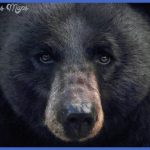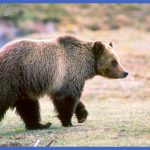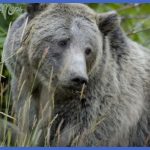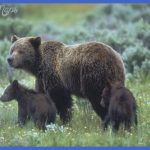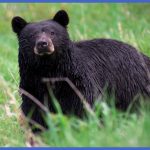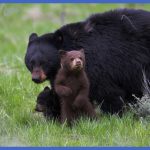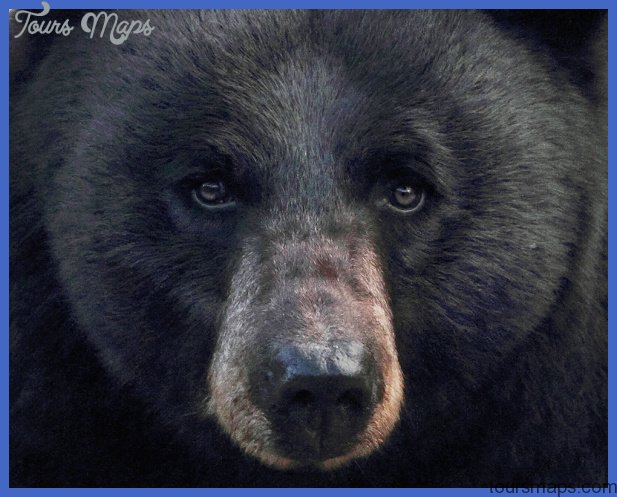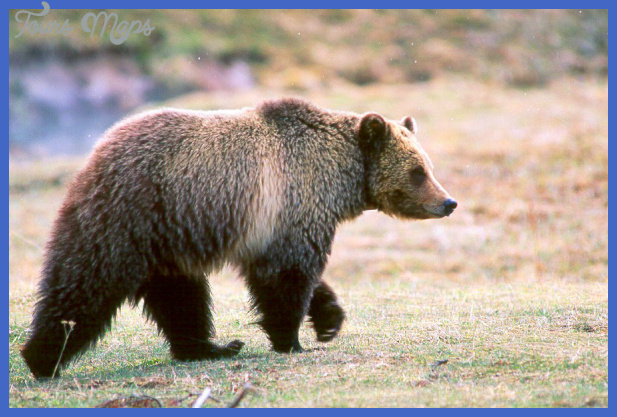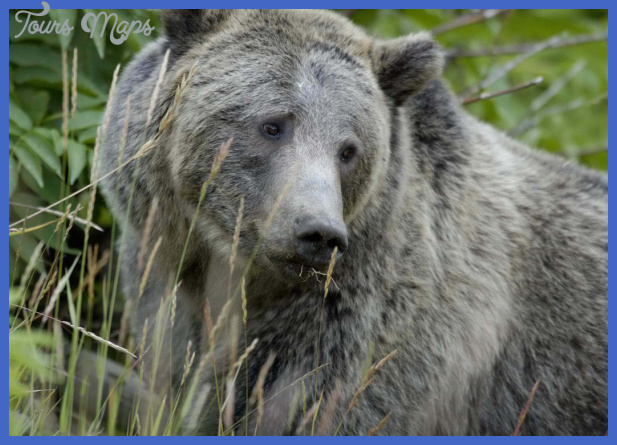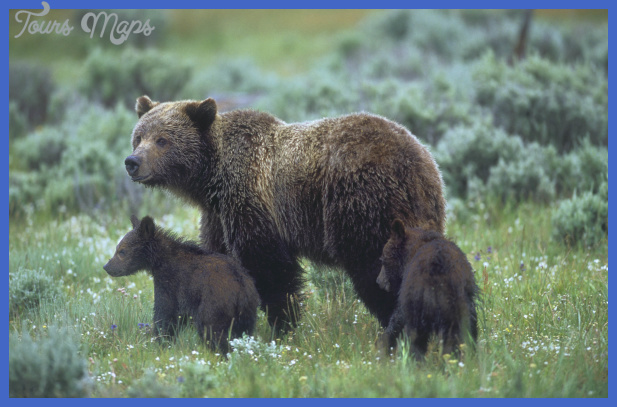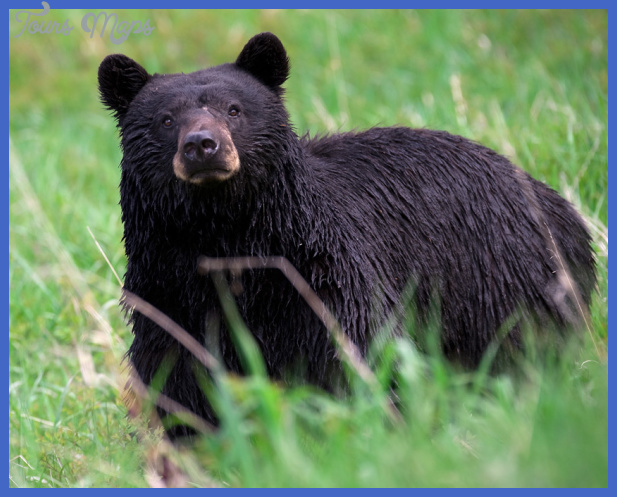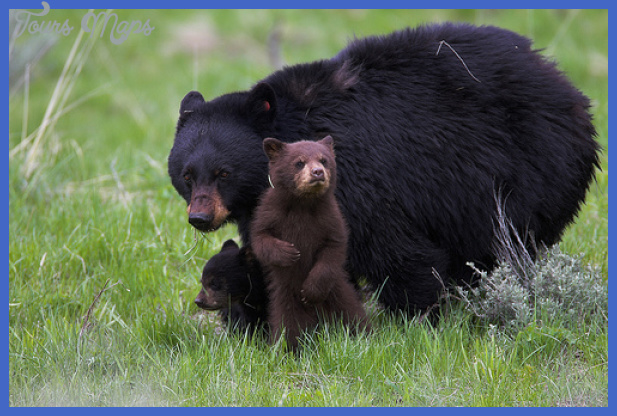Grizzly bears were probably more common here than black bears in the 19 th century. Recent estimates put the number of grizzlies in the Greater Yellowstone Ecosystem at about 500 to 600 (with at least half that many in the park itself); black bears are not as closely watched, but now their number is similar or a little larger. The so-called black bear (Ursus americanus) may be brown or cinnamon colored as well as black. To decide whether a bear you see at a distance is a black or a grizzly, try to observe its overall size. Adult black bears are usually about 3 feet (90 cm) in shoulder height and up to 5.5 feet (1.7 m) in overall length, weighing up to 250 pounds (114 kg). If you can see the face and ears clearly enough, observe their shape; black bears have a rather flat face in profile and pointed ears. Their claws are relatively short. Black bear (left) & Grizzly bear (right) In contrast, Yellowstone’s grizzly bears (Ursus arctos) often have the grizzled or silver-tipped hair their name suggests but may have darker hair at certain times of the year.
Grizzly boars (males) may weigh 700 pounds (318 kg) and sows 400 pounds (182 kg) and be 4.5 feet (1.4 m) in shoulder height and 6.5 feet (2 m) overall. Their most distinguishing features are a shoulder hump and extremely long claws, which help them dig roots but hinder them in climbing trees. Their sense of smell is incredible: the olfactory region in grizzly brains is about 250 times larger than that of humans. You can’t generalize about grizzlies, according to Dick Knight, former head of the Interagency Grizzly Bear Study Team, since each year they learn new tricks, and they are notoriously unpredictable. Grizzlies eat a varied diet. When emerging from their winter dens, they find winter-killed carrion and newborn elk calves, supplemented with grasses and sedges. In early summer they fish in trout spawning streams, and throughout the summer, they eat various plants, small mammals, and insects, especially ants and army cutworm moths. In late summer and fall, they raid squirrels’ middens full of whitebark pine nuts and feast on berries, when available. Black bears’ diet is similar, except they do not dig for roots and tubers as the grizzlies do.
By mid November, the bears are hibernating in their winter dens. Although mating occurs in June and July, the fertilized egg is not implanted in the sow’s uterus until after denning. This delayed implantation is a characteristic bears share with several of the park’s smaller mammals, such as river otters and badgers. Grizzly cubs are born in the den in January or February and black bear cubs a month or two later. In the wild, bears live about 15 to 20 years. Hikers should be aware that bears might be near the trails. Never approach a bear closer than 100 yards (90 m), do not hike alone, and make some noise as you go in order to let them know you’re there they don’t like to be surprised! Overnight hikers must obtain a permit from a ranger station or visitor center and follow the park regulations for making camp and securing food. In and near Yellowstone Park in over 125 years there have been ten bear-caused fatalities (two of which cannot be confirmed). Sensational media publicity when a bear has killed a human makes it seem that there have been more.
Yellowstone Bears Photo Gallery
Maybe You Like Them Too
- The Best Cities To Visit in The World
- World’s 10 Best Places To Visit
- Coolest Countries in the World to Visit
- Travel to Santorini, Greece
- Map of Barbados – Holiday in Barbados

